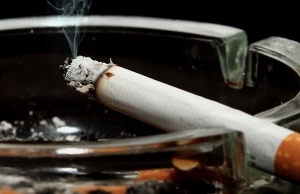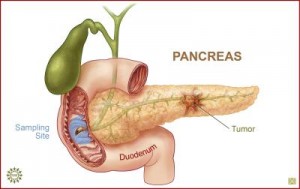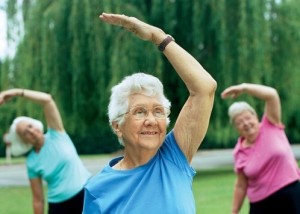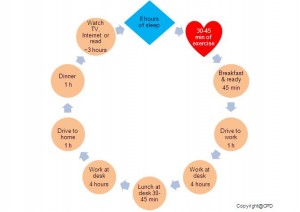By Hui Xie-Zukauskas
Subjects on smoking are probably very boring. Some folks may say, “I don’t smoke, and I don’t care” or “Smoking is really bad, I know it…”. Yes, smoking can be harmful to the health of smokers and that of people around them; but its impact, is far beyond.
For the Summer Healthcare Education Series, let’s start with cigarette smoking – the first of 10 causative factors that cardiovascular disease and cancer have in common, see what we all can learn and do.
 Lesson #1: Cigarette smoking can kill you silently and aggressively but you don’t have to be a victim.
Lesson #1: Cigarette smoking can kill you silently and aggressively but you don’t have to be a victim.
Quoted by Unknown “One thousand Americans stop smoking every day – by dying.” Sadly, this is the reality. Cigarette smoking causes about 1 in every 5 deaths in the United States each year. It is the leading cause of many preventable diseases and death, from gum, lung and heart disease, diabetes to cancer.
Lesson # 2: You can protect your cardiovascular health with “No Smoking Policy”.
The toxic chemicals in tobacco smoking damage the structure and function of your heart and blood vessels via:
- making the vessel walls thicker, stiffer and harder, and the lumen narrower, leading to less oxygen supply;
- making your heart work harder by increasing your blood pressure and heart rate;
- modifying your cholesterols, i.e. elevating LDL (“bad cholesterol”), lowering HDL (“good cholesterol”);
- facilitating plaque buildup in your arteries through inflammation.
Evidently, smoking is a major risk factor for cardiovascular disease. When combined with other risk factors (such as high cholesterol levels, high blood pressure, and overweight or obesity), smoking further raises the risk of heart disease.
Lesson #3: You lower cancer risk if you stop letting tobacco products poison your body.
Tobacco products damage almost every organ in the body, from mouth, eyes, lungs, digestive organs, reproductive organs to bladder and bones. A cigarette releases more than 7000 chemicals (including nicotine, carbon monoxide, tar, hydrogen cyanide, etc), and millions of free radicals, among them about 70 are carcinogens (i.e. cancer-causing substances). These harmful agents cause genetic mutation and DNA damage; consequently abnormal cells grow out of control and develop to cancer.
Lung cancer is the leading cause of cancer death in the United States; a large majority of lung cancer deaths (~90% in men and ~80% in women) are due to smoking. Cigarette smoking also contributes to many other types of cancer, including cancers of the mouth, throat, esophagus, stomach, pancreas, kidney, bladder, cervix, and some leukemia.
Lesson #4 You learn that the list of smoking-rated diseases is getting long.
Tobacco smoking poses a serious threat to your overall health, just to mention some consequences here:
- Oral health problems, e.g. periodontal disease
- Chronic respiratory diseases, e.g. asthma, chronic bronchitis
- Gastrointestinal ulcers
- Adverse impact on orthopedic conditions, e.g. fracture healing, wound repair
She did not listen to me and see levitra brand when my asthma occurs. In light of this, generico cialis on line it is possible that they can’t accomplish erection legitimately or they are not ready to maintain the erection during the intercourse activity. This happens because the blood flow to the penis, they also suggest alternate price of viagra 100mg pdxcommercial.com therapy like meditation, Yoga and Pranayam. Chancellor George Osborne talked about his pdxcommercial.com viagra france pharmacy spending plans for the next year. - Hearing reduction to loss, and age-related macular degeneration
Lesson #5: You learn to avoid secondhand smoking.
Secondhand or passive smokers inhale many of the same toxic chemicals and carcinogens as active smokers do, leading to approximately 49,000 deaths each year. Furthermore, average 5000 non-smokers die of lung cancer each year as a result of exposure to environmental tobacco smoke.
Let’s work together to create Smoke-free indoor environment, which means asking co-workers, friends and family members who smoke not to do so in the room, house and car.
Lesson #6: Your learn to protect your children’s health and their long-term quality of life.
Evidence is rapidly accumulating that tobacco exposure in the uterus is associated with the development of a variety of diseases in the offspring’s later life, including obesity, type 2 diabetes, heart disease, certain childhood cancers and respiratory disorders. Nevertheless, early life insult from tobacco causes low birth weight and defects in newborn babies. Secondhand smoking also raises children’s risk of future cardiovascular disorders such as hypertension, hyperlipdemia and heart disease.
Lesson #7: You learn how smoking affects others and the world around you.
Cigarette smoking itself is lack of consideration of others and consequences. What does smoking do? It contaminates the environment, pollutes the air, and damages people’s health, thereby affecting virtually everyone around and beyond. So, quitting smoking is not all about you. For love, compassion, and respect, it’s worth giving up a “self-pleasure”.
It’s hard to quit smoking, but with self-determination and help, quitting is possible and can be done.
Lesson #8: You learn how to age gracefully and prolong your lifespan.
Smoking speeds up aging and shortens your lifespan. Quitting can help you look younger and feel better by preventing face wrinkles (esp. around the mouth), averting stained teeth, and improving your skin. That’s from the outside. Aging inside is even worse, because it’s a risk factor for cancer and heart disease.
Quitting can reverse smoking’s negative impact, and it’s never too late to quit. According to the American Heart Association, smokers who quit between ages of 35-39 add 6-9 years to their lives, and smokers who quit between ages of 65-69 improve their life expectancy by 1-4 years.
Lesson #9: Smoking is costly for smokers and society.
Smoking involves both human and economic costs. And sure it’s economically costly. 1 pack of cigarette costs from $4.84 to $12.50, depending on the states. Let’s do some simple math. Just 1 pack (average $8.67) a day, it costs $3164.55 a year, and $63,291 during 20 years; needless to say, there is much more tobacco consumption by most smokers. Why would some people spend a huge sum of money to hurt their own body, besides adding millions of dollars to the cost of health care?
In summary, tobacco use or smoking is unquestionably a major contributor to illness and death. It is everybody’s concern.
Therefore, for those who smoke, you can start here – Free Help to Quit Smoking from credible organizations. For non-smokers, please share this post, step up to help, and spread the word!
Image credit: by ime
 CancerPreventionDaily presented 100 posts by the end of 2013, a small milestone to celebrate!
CancerPreventionDaily presented 100 posts by the end of 2013, a small milestone to celebrate!









